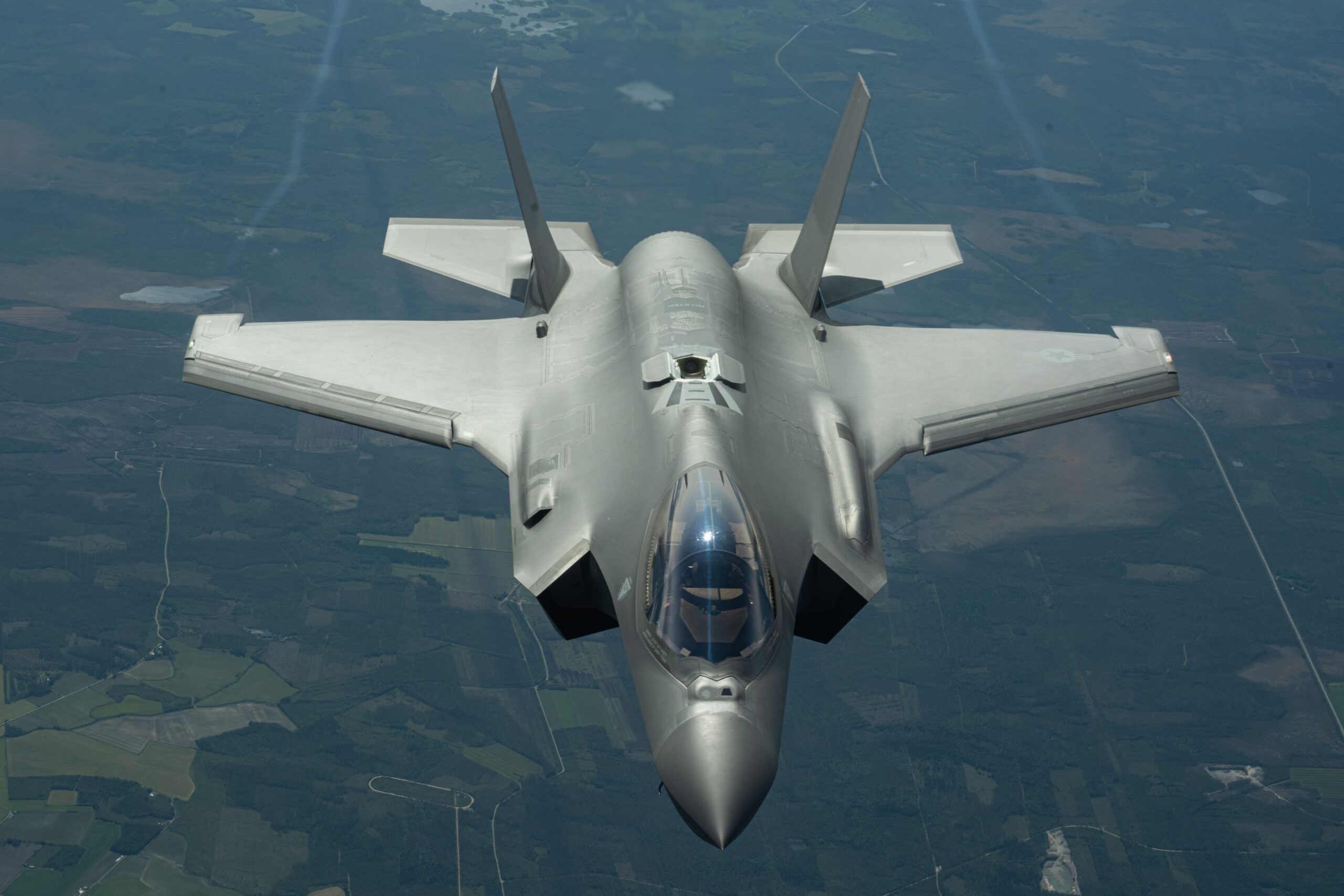The Netherlands and Norway will send their F-35 fighter jets to Poland from Sept. 1 to Dec. 1 under NATO command. The mission’s single goal is to keep the air route open for trucks, trains, and aircraft carrying weapons and spare parts to Ukraine. The Dutch defense ministry announced the move on Monday, and Oslo confirmed its participation hours later.
Dutch aircraft will operate from the 32nd Tactical Air Base at Łask, central Poland. Norwegian fighters will fly out of Rzeszów-Jasionka Airport in the southeast, where most allied cargo enters Ukraine. Both detachments fall under Supreme Headquarters Allied Powers Europe (SHAPE) after a formal transfer of authority. Defense officials confirm that each nation will keep two jets armed and on standby alert around the clock, with two more in reserve for sorties that may last up to six hours.
Mission details:
- Duration: Sept. 1 – Dec. 1
- Bases: Łask (Netherlands) and Rzeszów-Jasionka (Norway)
- Alert posture: 24/7 quick-reaction alert, two jets “cocked” at all times
- Command: NATO Integrated Air and Missile Defence System, Allied Air Command Ramstein
- National support: 220 Dutch personnel, 110 Norwegian personnel, plus Polish ground crews
The combined detachment will sit under NATO’s quick-reaction alert network, the same architecture that protects the Baltic republics. The tasking order covers the Polish-Ukrainian corridor as far east as the Bug River and up to 35,000 feet. Any radar track heading toward that lane without permission will trigger an immediate scramble. Meanwhile, the Polish military has also prepared with the recent delivery of AH-64D Apaches to enhance its defense capabilities.
Dutch planners point out that their F-35s have already flown this type of duty. Last winter, a four-ship package worked air policing over Estonia and intercepted Russian Su-24s in minutes. That record convinced The Hague to send the jets south.
Norway’s involvement builds on its current NASAMS deployment at Rzeszów. The ground battery will stay, giving the fighter detachment a layered envelope against drones and cruise missiles. Oslo’s defense ministry says the F-35 is now its “primary expeditionary tool,” noting that the fleet reached full operational capability in April. Meanwhile, the European Defence Agency pushes drone missions to enhance last-mile resupply capabilities using unmanned systems.
Rzeszów-Jasionka sits 90 km from the Ukrainian frontier and moves roughly three-quarters of all Western lethal aid headed to Kyiv. Freight flights from the United States, Germany, and the Netherlands land there daily before cargo rolls east on Polish trucks. Polish officers say the hub has faced repeated GPS jamming and drone reconnaissance this year.
The F-35’s sensor suite matters in that environment. According to industry sources, its AN/APG-81 radar can sweep for cruise missiles at low altitude while still maintaining a silent data link with Patriot batteries. Pilots can share tracks directly with NATO’s Integrated Air and Missile Defence backbone, cutting seconds off the engagement cycle.
Poland fields two German Patriot batteries near Rzeszów and its own short-range “Pilica+” system around Łask. Together with the Norwegian NASAMS and the visiting fighters, the shield forms a three-layer umbrella that can reach threats at 2 km, 30 km, and 70 km.
Logistics have been arranged to keep the jets airborne with minimum downtime. KLM Royal Dutch Airlines is seconding five reserve pilots to the Royal Netherlands Air Force, and Lockheed Martin will pre-position engines and spares at Łask under a fixed-price contract.
Romania and Italy will fill the air-policing gap left in the Baltic region while the Dutch aircraft deploy south. Meanwhile, Polish Air Force F-16s will pair with the incoming jets for joint tactical intercept drills. Warsaw views the rotation as proof that the alliance’s force-generation model is now routine, not ad-hoc.
Our analysis shows that the short, three-month window is long enough to cover Ukraine’s high-demand autumn resupply cycle yet short enough to avoid overextending limited European F-35 inventories. Expect a follow-on rotation from another northern ally early next year if the war continues.
The deployment signals two things. First, NATO now treats the Polish-Ukrainian corridor as strategic infrastructure on par with Baltic Sea pipelines. Second, the alliance is spreading fifth-generation fighters across the eastern flank, no longer concentrating them in a few bases. For Ukraine, the immediate benefit is simple: more weapons, arriving on time, under a safer sky.
REFERENCE SOURCES
- https://www.yahoo.com/news/dutch-norwegian-f-35s-guard-133818177.html
- https://www.dutchnews.nl/2025/07/netherlands-to-send-f-35s-to-patrol-polands-eastern-border/
- https://www.pravda.com.ua/eng/news/2025/07/7/7520573/
- https://www.defensenews.com/global/europe/2025/07/07/dutch-norwegian-f-35s-to-guard-ukraine-supply-lines-in-poland/
- https://global.espreso.tv/aid-dutch-f-35s-to-patrol-polish-skies-and-safeguard-ukraine-aid-routes
- https://defence-industry.eu/netherlands-deploys-f-35-fighter-jets-to-poland-to-guard-natos-eastern-flank/
- https://armyrecognition.com/news/aerospace-news/2025/breaking-news-dutch-f-35-fighter-jets-head-for-poland-amid-rising-russian-threat-and-nato-vigilance
- https://nltimes.nl/2025/07/07/dutch-f-35s-guard-polish-airspace-nato-move-russian-threat
- https://www.eurointegration.com.ua/eng/news/2025/07/7/7215355/
- https://www.bloomberg.com/news/articles/2025-07-07/klm-to-lend-pilots-to-dutch-air-force-for-fighter-jet-duties
- https://united24media.com/latest-news/dutch-f-35s-to-patrol-eastern-europe-shielding-ukraine-aid-from-russian-threats-9676


Launching_ceremony_2025-07-02-1-150x150.jpg)
